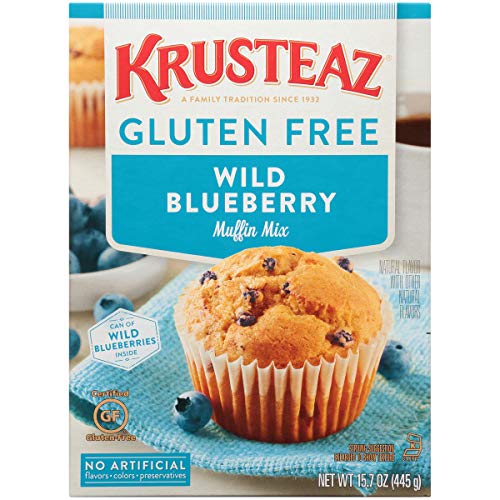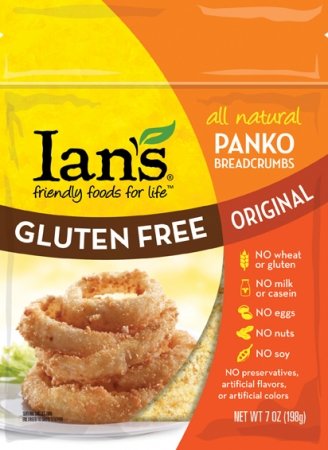
What is the Gluten Contamination Elimination Diet?
Published on Tuesday, February 21, 2023 by Elyse KrawtzGluten is a deliciously chewy protein matrix found in wheat, rye, and barley and in products and ingredients derived from these grains.
It is what keeps authentic pizza and pasta dough stretchy and chewy. But gluten can feel like a hidden predator about to pounce for someone with celiac disease.
In individuals with Celiac disease, their immune system viciously attacks their intestines in response to consuming gluten. People with celiac disease must strictly avoid gluten, which can affect physical health, finances, and social life.
Although a gluten-free diet (GFD) can be tough to maintain, it helps most individuals with celiac disease begin to feel better within weeks or months. Most…but not all.
Despite their best efforts, up to 30% of individuals continue to suffer from symptoms or intestinal damage from celiac disease after implementing a GFD for 6-12 months according to a review published in Nutrients in 2020.
The review highlighted several possible reasons for failure to improve on a GFD:
- Gluten exposure, whether intentional or unintentional
- Slow intestinal healing
- Misdiagnosis -- i.e. it wasn’t really celiac disease at all, but something else
- Missed diagnosis --i.e. It is celiac disease, but not just celiac disease
- Non-responsive celiac disease
- Refractory celiac disease
After thoroughly eliminating known or probable gluten exposure for these individuals, healthcare providers will both verify the celiac disease diagnosis and look for other disorders.
The authors in a 2017 report out of Nutrients report that some conditions cause similar symptoms and may occur in individuals with or without celiac disease.
These conditions include:
- Irritable bowel syndrome
- Pancreatic Insufficiency
- Inflammatory bowel disease
- Lactose or fructose intolerance
- Small intestinal bacterial overgrowth
- Microscopic colitis
- Autoimmune thyroid disease
- Functional dysmotility
- Other functional gastrointestinal disorders
- Autoimmune enteropathy
- Eosinophilic gastroenteritis
- Gastrointestinal infections
- Gastrointestinal side effects of medications
- Change in fiber intake
Gluten elimination does not treat all of these conditions.
For example, someone with celiac disease might need to limit additional FODMAP sources, treat an infection, or adjust their fiber intake to see symptom improvement in addition to a traditional GFD if they have a co-occurring gastrointestinal disorder.
But sometimes there isn’t another condition--just raging celiac disease despite a GFD. How is this possible?
Experts noted that celiac disease may sometimes be triggered by trace amounts of gluten below the 20 parts per million threshold typically considered gluten-free. In other words, a subset of super-sensitive individuals with celiac disease could react to foods labeled gluten-free--yikes!
To help these patients, experts including Dr. Fasano and colleagues developed the Gluten Contamination Elimination diet (GCED)-- a diet designed to eliminate possible sources of gluten contamination, including packaged or processed foods.
The GCED is a 12-week elimination and reintroduction diet. It is only intended for those who have:
- A confirmed Celiac disease diagnosis
- Followed a GFD for 12 months or longer
- Worked with a dietitian to review for gluten exposure
- Persistent significant damage on intestinal biopsies with or without antibodies
- Education, support, and follow-up available for 3 months during diet implementation
- Strict supervision of a knowledgeable dietitian
GCED is NOT for weight loss or diagnoses besides non-responsive celiac disease. It could worsen deficiencies or malnutrition in individuals at a high nutrition risk if implemented improperly.
Experts emphasize that it requires knowledgeable dietitian supervision from start to finish and micronutrient supplementation.
To understand the GCED restrictions, think about minimizing opportunities for gluten cross-contamination by minimizing steps between the source of the food and its consumption.
For example, fresh bananas are included in all GCED phases, but packaged frozen sliced bananas or banana chips would be excluded. Why? There are very few opportunities for cross-contaminating a fresh banana in its peel, but packaged banana products must be peeled, sliced, seasoned, frozen or fried, and packaged. Each step of the process could potentially introduce trace amounts of gluten.
The Gluten Containing Elimination Diet (GCED) has three phases:
- Phase 1 lasts 2 weeks and includes whole, unprocessed, or minimally processed foods such as fresh produce and proteins, gluten-free rice, and simple flavors like plain honey, salt, fresh herbs, and olive oil. It omits frozen, canned, and dried foods and items mixed or flavored.
- Phase 2 lasts up to 10 weeks and introduces simple foods one at a time every 2-3 days while monitoring symptoms. This phase continues to eliminate foods with several ingredients and more processing such as processed meats, canned and frozen foods, and flavored dairy.
- The last phase is a return to the gluten-free diet (GFD) with a systematic reintroduction of gluten-free foods eliminated in earlier phases after retesting for signs of active celiac disease using EGD and bloodwork. An RD should personalize the rate of reintroduction.
More research is needed to refine GCED’s design and implementation, and to understand its efficacy. Experts note that it does not work for patients with truly refractory celiac disease.
The majority of individuals with celiac disease should recover with the good ol’ gluten-free diet and should not need a GCED. Many unresponsive individuals require treatment for another diagnosis or better gluten-free practices. However, for the right individual with non-responsive celiac disease and the support, assistance, and supervision from their healthcare provider and a knowledgeable dietitian, GCED could be a useful tool to consider with one’s healthcare team.
- U.S. Department of Health and Human Services. (n.d.). Definition & Facts for celiac disease. National Institute of Diabetes and Digestive and Kidney Diseases. Retrieved February 7, 2023, from https://www.niddk.nih.gov/health-information/digestive-diseases/celiac-disease/definition-facts
- Penny, H. A., Baggus, E. M. R., Rej, A., Snowden, J. A., & Sanders, D. S. (2020). Non-Responsive Coeliac Disease: A Comprehensive Review from the NHS England National Centre for Refractory Coeliac Disease. Nutrients, 12(1), 216. https://doi.org/10.3390/nu12010216
- Leonard, M. M., Cureton, P., & Fasano, A. (2017). Indications and Use of the Gluten Contamination Elimination Diet for Patients with Non-Responsive Celiac Disease. Nutrients, 9(10), 1129. https://doi.org/10.3390/nu9101129
- Hollon, J. R., Cureton, P. A., Martin, M. L., Puppa, E. L., & Fasano, A. (2013). Trace gluten contamination may play a role in mucosal and clinical recovery in a subgroup of diet-adherent non-responsive celiac disease patients. BMC gastroenterology, 13, 40. https://doi.org/10.1186/1471-230X-13-40
Leave a comment on this article:
-
Elyse Krawtz
MS, RDN, CSOWM, LD

7 Tips for Dating on a Gluten-Free Diet

Gluten-Free Pumpkin Streusel Muffins
RECIPE INSIDE
Do You Really Need A Digestive Enzyme Supplement?

Gluten-Free Strawberry Cream Cheese Shortbread Bars
RECIPE INSIDE
Introducing Solid Foods to Babies with Reflux: A Safe and Smooth Journey

7 Reflux-Friendly Snacks With Zero WW Points





